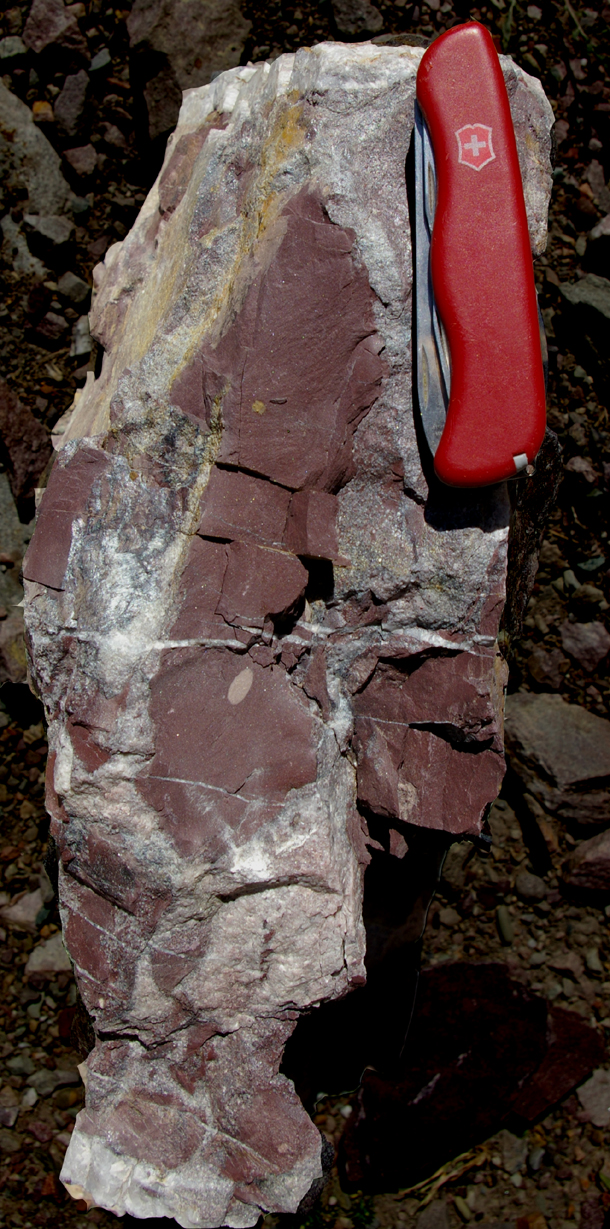Last summer, in Bonner, Montana on my Rockies field course, I took the students to see some nice exposures of Belt Supergroup strata on the side of the road. We were keeping our eyes peeled for both primary structures (i.e., patterns in the sediment that formed at the time of their deposition) and secondary, or tectonic, structures (i.e., those that formed as a result of the rock being strained under tectonically-imposed stresses).
One student found this sample, which made me go all ga-ga because of the wealth of different structures it displays:

How many different structures can you identify here? Start naming them in the comments! I’ll post an annotated version of the diagram tomorrow so you can compare your structure-o-vision to mine…

Let’s start off with…
Tension gashes (quite prominent) filled with quartz or, more likely, calcite. Wish I had my bottle of HCl handy!
Lovely jointing which pops out thanks to the angle of the light. These appear to be subparallel to the tension gashes. Makes sense.
A plumose joint in that maroon clast – I can convince myself I’m seeing hackles propagating from very near the right edge of the clast, just to the left of the Victorinox knife tip.
I’ll stop there for now, for it’s time to refill the coffee pot.
Here are the structures I see:
1. en echelon veins
2. Ductile and brittle deformation of clast
The maroon clasts look like they might be rip-ups.
Besides the brittle stuff mentioned already, I see a cleavage (in the yellow stuff) near parallel to the long axis of the elliptical reduction spot.
And there’s something odd about the maroon clasts. I was going to guess that they’re clasts in a breccia, though rip-up clasts are also a possibility.
ABC joints, chill border, tension cracks.